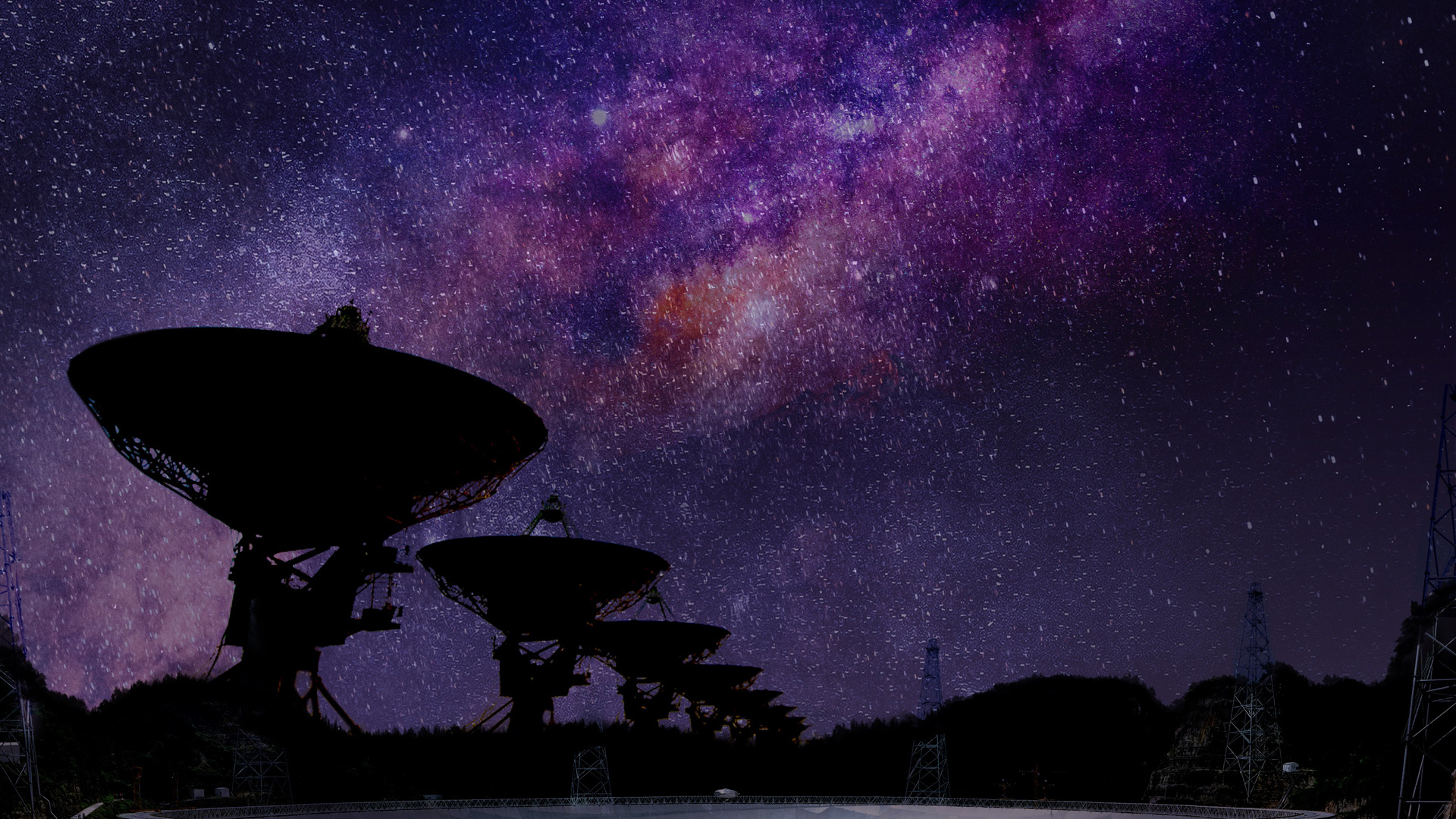Discovery of second repeating fast radio burst raises new questions
Fast radio bursts (FRBs) are intense, brief flashes of radio-frequency emissions, lasting on the order of milliseconds.

An international team of astronomers have discovered a second persistently active fast radio burst, posing questions about the nature of the mysterious phenomena.
Fast radio bursts (FRBs) are intense, brief flashes of radio-frequency emissions, lasting on the order of milliseconds. The phenomenon was discovered in 2007, by graduate student David Narkevic and his supervisor Duncan Lorimer. The source of these highly energetic events is a mystery, but clues as to their nature are being gradually collected.
The new source, Fast radio burst 20190520B, was detected with the Five hundred-meter Aperture Spherical radio Telescope (FAST) in Guizhou, China, on May 20, 2019 and found in data in November that year, a new study reports.
Follow-up observations by the Jansky Very Large Array (VLA) program led by Caltech found weaker, constant radio emissions associated with the FRB, also allowing the Subaru telescope in Hawaii to localize the source to be within the fringes of a dwarf galaxy nearly 3 billion light-years from Earth.
Related: 'Radio colors' from mysterious deep-space flashes reveal lone stellar corpse as source
Notably it is the second discovered repeating FRB to be associated with a persistent radio source (PRS), following the localization of FRB 121102 in 2012.
"The big surprise for me was realizing that the new FRB seems to be such a perfect 'twin' to an earlier discovery," Casey Law, an astronomer at Caltech and a co-author who led the VLA program, told Space.com.
Breaking space news, the latest updates on rocket launches, skywatching events and more!
"Perhaps some would have preferred to say that the first such association [between an FRB and radio source] was a coincidence, because it was hard to explain. Now the second example shows that this is a real and critical part of the life of an FRB."
The discovery raises new questions about the nature of FRBs, such as if the sources of the FRBs evolve over time, or alternatively whether different kinds of sources are capable of emitting FRBs.
"One of the key questions in the field of FRBs is whether all FRB sources repeat," Di Li, of the National Astronomical Observatories of China (NAOC) and lead of the Commensal Radio Astronomy FAST Survey (CRAFTS) which detected FRB 190520B, told Space.com via email. "I personally favor an evolutionary picture in that all sources repeat, but the activity level drops precipitously as the source ages. Since FRB 20190520B is only the second of around 500 known FRBs to have a so-called PRS counterpart and both are extremely active, they could, in this hypothetical evolutionary picture, represent FRBs' youth, which lasts not very long."
Another special feature of FRB 190520B is its dispersion measurement, which indicates its emissions passed through the highest density of electrons of any FRB before being observed on Earth. This suggests the FRB is active in a local plasma environment, such as that created by a supernova, and is a newly created source.
While providing insights into the environment of FRB 190520B, the large disparity in dispersion measurements with other FRBs calls into question their use as "cosmic yardsticks" for measuring distances.
Franz Kirsten, a postdoctoral researcher at the Netherlands Institute for Radio Astronomy (ASTRON) and Chalmers University in Sweden who was not involved in the research, told Space.com that an evolutionary path for FRBs is possible, but with just these two sources, it's hard to tell.
"We need to find more and to constrain this evolutionary stage model. We really need more at a different ages to say okay, this thing is fading away all the time," Kirsten said. "So what would be really nice to see is if these persistent sources were indeed fading over time, over say, 10 to 20 year timescales. If we can say, okay, these are becoming fainter, then that is certainly an indication that this is a possibility."
To follow up this research, co-author Yu Wenfei with the Shanghai Astronomical Observatory told Space.com that the "mechanisms responsible for the extra dispersion measure and the near-source environment of such repeating FRBs with a PRS association are the outstanding problems to follow and to solve."
"I am optimistic that the FRB puzzle will be solved by investigating such extreme FRBs," Yu said.
Di also sees high value in the discovery of more repeating FRB sources, along with trying to get a much better picture of the environments in which they occur, for example using the Hubble Space Telescope for follow-up observations.
Cooperation between astronomers and facilities across the globe will be crucial in finding, localizing and characterizing these mysterious phenomena, as it has been for the case of FRB 190520B.
"This discovery is impossible without international cooperation. FAST made the discovery and only VLA is capable of localizing it so efficiently. Each instrument has its forte and we all have one sky," says Di.
The study was published online in the journal Nature today (June 8).
Follow us on Twitter @Spacedotcom or on Facebook.

Andrew is a freelance space journalist with a focus on reporting on China's rapidly growing space sector. He began writing for Space.com in 2019 and writes for SpaceNews, IEEE Spectrum, National Geographic, Sky & Telescope, New Scientist and others. Andrew first caught the space bug when, as a youngster, he saw Voyager images of other worlds in our solar system for the first time. Away from space, Andrew enjoys trail running in the forests of Finland. You can follow him on Twitter @AJ_FI.
